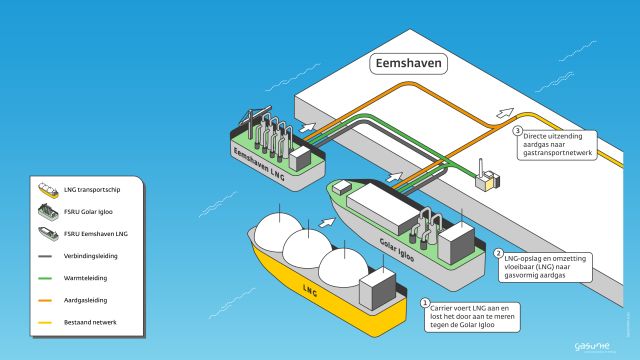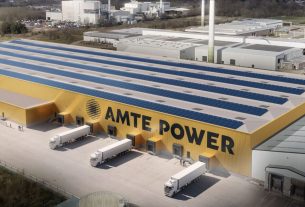The Netherlands – Last week the first cargo of liquefied natural gas arrived at the new floating storage facility at Eemshaven. In the record time of six months, Gasunie and construction partners managed to expand the storage of liquid natural gas by two-thirds. And Gasunie is now looking further afield.
The expansion of the LNG terminal in the port of Rotterdam and this floating installation have even doubled the total capacity in the Netherlands to 24 billion cubic meters of natural gas a year, available for the Dutch natural gas network. A lightning-fast response to the Ukraine crisis.
Hydrogen and ammonia
Gasunie is now looking beyond the short term. The two floating storage facilities will be leased for five years. There is a good chance that by then a terminal will have risen on the piece of land behind the tank for the storage of hydrogen and possibly also ammonia. Gasunie is expecting a lot from the role of hydrogen in the energy transition. And ammonia can become an important carrier for transporting hydrogen overseas. Precise plans for this are still being drawn up. The company already has more concrete plans for the Maasvlakte. See also the vlog we made for the Hydrogen Trail Europe.
Eight billion
The floating storage units (FSRUs): the Eemshaven LNG and the Golar Igloo have been leased for a period of five years and are located in one of the Eemshaven harbour basins. The incoming boats transporting LNG in turn dock ship-to-ship against the Golar Igloo for unloading. From there it can be transshipped onto the Eemshaven LNG.

Both units can ‘regasify’ and feed gas into Gasunie’s gas pipeline network. A natural gas pipeline and a hot water pipeline have been laid on the quay. There are also connecting pipelines between the FSRUs for the aforementioned transport of LNG between the storage units. A new gas pipeline has been laid from the quay to Gasunie’s already existing network. The gas pipeline is, outside the terminal entirely underground. And although they are physically two FSRUs, EemsEnergyTerminal will provide services to users as one terminal. The EemsEnergyTerminal will be able to make a total of eight billion cubic meters of natural gas per year available to the national natural gas network after processing the LNG that has been delivered.
Terminal
Until this year, the Netherlands only had an LNG terminal at the port of Rotterdam. The expansion in Eemshaven and the optimization of the terminal in Rotterdam will double the import capacity for liquefied natural gas.





